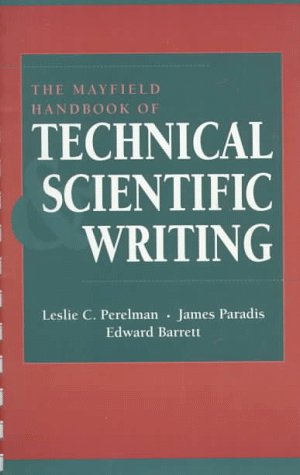We spent many hours on research and managed to find top 10 technical editing rude that is best suitable for you. This review is based on reliable sources, product specs, and hundreds of customer reviews. In this article, were going to highlight the main features of the best technical editing rude and why they are important when it comes to choosing the right one.
Best technical editing rude
Related posts:
Best technical editing rude reviews
1. Technical Editing (5th Edition) (The Allyn & Bacon Seriesin Technical Communication)
Description
This market-leading text, whichreflects recent changes in technology, workplace practices and the global marketplace,progresses from concepts and basic copyediting to comprehensive editing, management and production issues. The addition of Angela Eaton of Texas Tech University brings afresh tone to her updates of content and pedagogy while retaining the authoritative voice of Carolyn Rude. Some of the text's changes include an update ot Chapter6, "Electronic Editing," and examples about editing Web sites are foundthroughout the textto support the increased role of onlineresources in every aspect of communication.
2. Technical Editing: The Practical Guide For Editors And Writers (Hewlett-Packard Press)
Description
3. Technical Editing: An Introduction to Editing in the Workplace
Description
Technical Editing: An Introduction to Editing in the Workplace offers the most comprehensive, accessible, and current approach to technical and professional editing. Written by an experienced author team, the first part of the text provides an overview of the editing process (appraising the document, creating an editing plan, and implementing the plan), the second part covers substantive editing (editing for organization, completeness, accuracy, etc.), and the third part explains copyediting (from its principles and procedures to their application in practice) and proofreading. The authors discuss such topics as fraud in the workplace and whistleblowing; navigation aids in print and digital documents; redaction of classified or confidential information; layout and design principles; controlled languages, the plain English movement, and international varieties of English; content reuse and content management systems; and electronic editing skills. The book provides ample coverage of grammar, punctuation, and usage, with many authentic examples from technical and business documents.4. Technical Editing Plus MyLab Writing without Pearson eText -- Access Card Package (5th Edition)
Description
This market-leading text, whichreflects recent changes in technology, workplace practices and the global marketplace,progresses from concepts and basic copyediting to comprehensive editing, management and production issues. The addition of Angela Eaton of Texas Tech University brings afresh tone to her updates of content and pedagogy while retaining the authoritative voice of Carolyn Rude. Some of the text's changes include an update ot Chapter6, "Electronic Editing," and examples about editing Web sites are foundthroughout the textto support the increased role of onlineresources in every aspect of communication.
0133937704 / 9780133937701 Technical Editing Plus MyWritingLab -- Access Card Package
Package consists of:
0133933296 / 9780133933291 MyWritingLab Generic -- Glue in Access Card
013393330X / 9780133933307 MyWritingLab Generic -- Inside Star Sticker
0205786715 / 9780205786718 Technical Editing
5. Editing Technical Writing
Description
Exhaustively illustrated and broad in scope, "Editing Technical Writing" is a comprehensive textbook and reference for students of technical editing and communication, as well as a training manual for working professionals in business and government who must revise documents to communicate technical information clearly and effectively. It examines the editor's broad role in the collaborative writing of a document, from scheduling, staffing, and budgeting publication work through editing text and graphics to coordinating proofreading and production work. Chapters on editing text and graphics are supplemented by others on degrees of edit, style guides, editing specific types of documents such as proposals, proofreading, schedules and budgets, grammar, and punctuation. Extensive examples, materials to edit, and exercises with answer keys and explanations clarify editorial goals and procedures and provide students with realistic editing experience. Discussions of concepts such as legibility, readability and effective design contribute to the students' base in communication theory. Also, editing guidelines and graphics from a variety of professional documents introduce the range of materials and techniques available to the technical editor and make "Editing Technical Writing" a valuable reference as well as text. A bibliography identifies valuable resources for editing student and editors.6. How to Edit Technical Documents:
Feature
Used Book in Good ConditionDescription
How to Edit Technical Documents is the most concise and clearly presented discussion of the editor's role and responsibilities to the writer, the reader, and the publishing processincluding changes that result from technological advances in editing. The authors describe the demands of communicating complicated information, in print and on screen, without diminishing the expressive power of language. As a result, users learn the skills necessary to become contributing members of any organization that requires informed and imaginative editors.
7. The Mayfield Handbook of Technical and Scientific Writing
Feature
Used Book in Good ConditionDescription
The Mayfield Handbook of Technical and Scientific Writing offers the ideal combination of comprehensive coverage, accessibility, and convenience. It supplies grammatical and stylistic information, provides the key format elements of common technical documents along with illustrative examples, guides authors in the effective use of visual information, and helps writers revise and edit their own work as well as review that of others.The Mayfield Electronic Handbook of Technical and Scientific Writing, which is platform-independent and can interact with several applications at once, can be used alone or accompanied by the printed version.
8. The Longman Guide to Technical Editing
Description
Education College Teaching Writing9. Technical Editing + New MyTechCommLab
Feature
Used Book in Good ConditionDescription
Rude, Carolyn D., Eaton, Angela10. Technical Editing by Carolyn D. Rude (1991-05-03)











